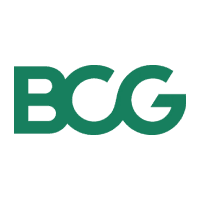
Create financial incentives for suppliers
 BCG
BCG WBCSD Climate Masterclass Series
WBCSD Climate Masterclass SeriesSummary
Supplier decarbonization can be incentivized financially or non-financially. Understanding supplier context and related benefits and risks is key for implementation.
Key resources
Context
In early October 2023, WBCSD and BCG conducted a masterclass on this topic. This document summarizes the key learnings that were presented and surfaced via rich discussion among company participants under Chatham House rules.
Integrating decarbonization into procurement decisions and actions is critical to decrease scope 3 emissions from the supply chain. To set effective supplier decarbonization requirements, companies should consider the supplier context, timing in negotiation, desired inputs/outcomes, degrees of fulfillment, rewards/penalties, and scalability of the requirements onto other suppliers (see Advancing decarbonization requirements in procurement for more information).
Defining supplier incentives and disincentives mechanisms (the “so-what”) is critical to ensure a feedback loop to accelerate climate action in the supply chain. Well-designed incentives encourage suppliers to decarbonize more than they might otherwise, while offering freedom to innovate and pursue a path forward that makes sense for their business circumstances.
On the other hand, supplier incentives have potential risks if implemented poorly. For example, they may:
increase costs without increasing impact
harm a company’s reputation and potentially impact procurement power for other purchases
create unrealistic supplier decarbonization expectations that may ultimately lead to supply disruption
Depending on the context, companies can use several types of incentives that may be financial or non-financial in nature, to motivate suppliers to act. Strategically selecting and implementing tailored incentives can help companies achieve more cost-efficient and effective decarbonization, while nurturing positive supplier relationships and minimizing risks. For example, financial incentives could help suppliers overcome the cost barrier that currently exist for many decarbonization levers.
Solution
Incentives are tools in the toolkit to accelerate supplier action on climate. While companies do not need to use all incentives and/or disincentives, using several incentives in combination can help to build a cohesive program for engaging and motivating suppliers. The following figure provides an overview of the financial and non-financial incentives companies can implement to accelerate decarbonization in their supply chains.
Figure 1: 5 types of incentives and disincentives to accelerate supplier decarbonization

Choose the right financial incentives
Selecting the right financial incentives is pivotal for companies aiming to advance supplier decarbonization effectively. Financial incentives directly influence supplier behavior, by providing immediate and quantifiable benefits to suppliers, which can be more compelling than non-financial incentives. These benefits result in quicker and more measurable impacts on supplier decarbonization.
Below are the five key types of financial incentives:
1) Joint investment and capital injection: investing directly in suppliers' operations or in a joint project to support long-term decarbonization solutions.
Supplier segment: High-impact and strategic suppliers, struggling to invest in specific decarbonization technology.
Key considerations: These long-term strategies depend on supplier operational efficiencies to realize decarbonization outcomes. Additionally, strict stipulations on the utilization of the investments towards decarbonization might be necessary.
2) Supply chain finance: arrangement of favorable payment terms through a financial institution for suppliers that perform well on sustainability, thus enhancing liquidity of funds while accelerating decarbonization.
Supplier segment: SME (high impact/ transactional suppliers) that lack capital to invest into decarbonization solutions and have limited access to other sources of financing.
Key considerations: Company (buyer) needs to have a strong credit rating in order to secure favorable financial terms
3) Green premiums: paying higher prices to suppliers for lower carbon products or for implementing decarbonization levers, to offset the higher costs associated with sustainable product development. (Higher costs may be passed along to end-consumers, depending on the industry.)
Supplier segment: Targeted focus on high-impact suppliers that are less advanced in climate efforts and struggling with decarbonization cost structures.
Key considerations: Green premiums should be used in a targeted manner, due to increased costs for the buyer. As regulations change and sustainable products become more normalized, cost premiums may fall. Companies and suppliers that want to take advantage of green premiums should act today in order to capture value before price neutrality is reached.
4) Long-term contracts: extending contract terms with suppliers and embedding decarbonization metrics within these contracts, to create a pathway towards achieving longer-term climate goals
Supplier segment: Key suppliers with relatively high share of Scope 3 emissions (strategic or high-impact categories), especially those that have significant share of their sales with the buyer
Key considerations: Companies implementing longer-term contracts with key suppliers should keep in mind the investment required to transition to green energy when evaluating feasibility and viability for the company’s and suppliers’ business circumstances. It’s important to ensure flexibility in the longer-term contract by hedging risks, implementing price ceiling and floor, reviewing regularly, setting renegotiation triggers and sliding scale of price premiums/discounts.
5) Penalties: imposing fees on suppliers failing to meet sustainability or emissions standards.
Supplier segment: Suppliers with low decarbonization maturity (transactional / high impact), in the categories where buyer has more power than suppliers (buyer’s market).
Key considerations: Delicate balance required to ensure penalties incentivize the right behavior while maintaining strong supplier relations.
Understand the tradeoffs for financial incentives
Once a company has decided to implement financial incentives, it must assess a variety of tradeoffs for the unique supplier context. For example:
Suitable supplier segment: As discussed above, different supplier segments may respond differently to different types of incentives. (See Designing supplier engagement program for more information).
Required resources: Financial incentives require specific resources or qualifications. (See Impact below for more information)
Associated risks: Companies will need to balance other factors with potential risks. (See See Impact below for more information)
Expected benefits: Benefits, as well as positive externalities, can impact both the company and the supplier. (See Impact below for more information)
Implementation considerations: Companies need to consider various implementation requirements to ensure decarbonization goals are achieved. (See Implementation below for more information)
Additional non-financial incentives
Companies can also implement non-financial incentives, boosting suppliers’ skillset, reputation, relations with the buyer, etc., complementing financial ones without direct economic transactions. For example:
Education and upskilling: These incentives increase suppliers’ knowledge on decarbonization, e.g., through upskilling, peer benchmarking, funded appraisals, and providing access to technology, experts, or IP. Companies could focus on supporting less mature and high-impact suppliers to effectively cover the knowledge gap to decarbonize.
Exclusivity and streamlining: Companies can offer exclusive contracts and simplify procurement processes with suppliers making strong decarbonization progress.
Marketplace creation: Companies can set up platforms that encourage and endorse suppliers who are committed to and proficient at decarbonization, giving them more visibility and business opportunities.
Qualifications and consequences: Scorecards and clear qualification rules can be used to make sure suppliers adhere to decarbonization goals, and show clear accountability, such as by not renewing contracts or reducing volume for those who do not.
Recognize: Suppliers who excel in decarbonization can be rewarded through internal or public recognition, special status, partnership announcements, or even co-branded products and services. Co-branding can be effective with high maturity, strategic suppliers that have resources to partner (as compared with investing heavily in incentives for lower-maturity, albeit high-impact, suppliers).
Usage
Rabobank (i), a multinational banking and financial services company headquartered in the Netherlands., prioritizes sustainability and operates on the basis of cooperative principles. Together with Coca-Cola Europacific Partners (CCEP), Rabobank has established a sustainability-focused supply chain financing scheme designed to incentivize suppliers who are meeting established decarbonization criteria. Under this financing scheme, suppliers invoice CCEP for their delivered goods, Rabobank pays suppliers early for meeting the sustainability requirements, and Rabobank settles with CCEP at the default term for credit (e.g., 60, 90, 120 days etc.). Suppliers must have an EcoVadis score above a certain threshold to qualify. If they have further set emissions reductions targets in line with SBTi, aim to use 100% renewable energy, or have a higher EcoVadis score, they would be eligible for additional discounts and benefits. This allows suppliers to receive favorable payment terms on the basis of their sustainability performance and to improve their liquidity, while allowing CCEP to adhere to their usual business practices. CCEP’s strong credit rating plays a central role in providing suppliers access to better financing terms.
Fonterra (i) is a publicly traded dairy cooperative of ~9000 farmers in New Zealand, that is responsible for approximately 30% of the world's dairy exports. As a cooperative, Fonterra offers incentives to farmers to implement emissions reduction measures. Specifically, Fonterra offers 3 tiers of green premiums to farmers who meet specific decarbonization requirements.
Farmers engaging at level 1 implement foundational activities like creating a Farm Environment Plan and receive an additional 7 cents per kilogram of milk solids.
At level 2, farmers must surpass 30 days of their sustainable products meeting “excellent” quality levels, which earns them an additional 3 cents per kilogram (10 cents total).
The third level of recognition by Fonterra is awarded to farmers who achieve “excellent” quality levels for sustainable milk/dairy for 90% of the season; these farmers are publicly acknowledged with non-financial recognition, in addition to the 10 cent per kilogram premium.
Danone (1) is another multinational food products company, with an emphasis on dairy. Like Fonterra, Danone incentivizes farmers through financial means. While Fonterra leverages green premiums, Danone has multiple ongoing initiatives to support sustainability-minded farmers with longer-term contracts. These programs allow Danone to invest in future generations of suppliers while securing a long-term pathway for decarbonization of its portfolio. Some of Danone’s long-term commitments with suppliers include:
Farming for Generations (F4G): Led by Danone, F4G is a global alliance with the goal of promoting regenerative farming practices that have a positive impact on nature and ensure long-term economic viability of dairy farming businesses
Danone Ecosystems: Danone’s Ecosystems initiative catalyzes and develops projects that strengthen inclusion and environmental sustainability in ecosystems where Danone operates, providing organizational know-how, technical expertise and financing support
Livelihood Funds: Supported by a coalition of actors, Livelihood Funds support the efforts of agricultural and rural communities to restore the natural ecosystems that are the foundations of their livelihoods, food security and income
Impact
Climate impact
Targeted emissions sources
Supplier engagement programs for decarbonization facilitate emissions reductions primarily in:
Scope 1 (of suppliers): emissions from heating
Scope 2 (of suppliers): emissions from electricity
Scope 3 (of purchasing company, primarily in these upstream categories, and for the supplier):
Category 1: (Purchased Goods and Services)
Category 2: (Capital Goods)
Category 3: (Fuel- and Energy-Related Activities)
Category 4: (Transportation and Distribution)
Category 5: (Waste Generated in Operations)
Decarbonization impact
The decarbonization impact of helping suppliers reduce emissions varies by sector, based on the proportion of Scope 3 emissions, but supplier engagement represents a crucial component of addressing GHG emissions for most industries. Industries that are closer to the consumer will often have a higher proportion of Scope 3 (upstream and downstream) emissions than manufacturers and others further upstream in the value chain. Examples of these industries include:
Apparel: ~85%+ Scope 3 emissions
Biotech: ~75%+ Scope 3 emissions
Food & Beverage: ~85%+ Scope 3 emissions
Retail: ~90%+ Scope 3 emissions
Ultimately, all upstream Scope 3 emissions boil down to the operational (Scope 1 and 2) emissions of a supplier somewhere in the value chain.
Business impact
Benefits
Major benefit of all financial incentives is increased motivation of suppliers to invest in decarbonization, potentially resulting in lower Scope 3 emissions for the company. Besides that, financial incentives offer other benefits to both the supplier and buyer:
Supply chain financing: Suppliers gain liquidity as well as favorable payment terms, while buyers benefit from building a resilient supply chain and progress toward their Scope 3 decarbonization targets.
Premiums: Assuming that the premium can be passed on to consumers, companies can capture new markets (e.g., sustainability-conscious consumers), with buyers also possibly being able to sell their product/service at a higher selling price. This may (more than) recover costs associated with offering the supplier a green premium incentive. However, green premium may dwindle over the medium- to long-term and thus this effect is likely time-bound.
Long-term contracts: Suppliers benefit from stable demand for their products, while buyers benefit from reduced volatility in supply. Long-term contracts foster deeper relations with the suppliers.
Penalties: Buyers benefit from higher motivation of suppliers and potentially lower costs due to the penalties. This is also beneficial to more advanced suppliers as penalties may give them an edge over other suppliers.
Capital injections: Vertical integration or other investments into a supplier’s business offers the supplier greater resources and expertise, and at the same time can give the buyer access to better input prices.
Costs
In some cases, financial incentives/disincentives may result in costs:
Supply chain financing: Costs arise from data collection, verification and tracking; as well as from implementing supplier training programs.
Premiums: If a company is unable to pass the green premium to consumers or other supply chain initiatives, it will incur additional procurement costs. Furthermore, the process and toolkit for decarbonization data collection, verification and tracking also incurs additional costs
Long-term contracts: In some cases, long-term contracts can lead to procurement costs that are higher than those available in the market, especially if the market conditions shift in a direction that provides cost savings to all competitors.
Penalties: Costs associated with rigorous data collection, verification and tracking are necessary for penalties implementation.
Capital injections: Financial resources (substantial liquidity or access to financial markets) and expertise are essential for investment and ongoing operations of the invested project.
Additional costs could be driven by exposure to incentives-specific risks:
Supply chain financing: Risk of default; besides, lower credit rating of the buyer could lead to less favorable payment terms; terms of program may be misaligned with supplier priorities and needs.
Premiums: Profitability risks (margin erosion) if unable to pass on the premium to the consumers.
Long-term contracts: If milestones and performance are not monitored closely: risk of working with a suboptimal supplier (on capabilities such as timeliness, quality); risk of dependence on a supplier, company’s reputation risk.
Penalties: Risk that companies may lose suppliers who are otherwise capable (e.g., meeting quality standards) if they are unwilling or unable to commit to decarbonization, at the same time risking the company’s business continuity. Also, companies may strain to meet all their supplier diversity goals when requiring more of their suppliers.
Capital injections: Risk of supplier overdependence when integrating and investing in their business, along with an additional layer of complexity into the relationship.
Additionally, across all incentive types, poorly planned or executed incentives risk yielding insufficient decarbonization benefits, despite the invested resources. Supply chain disruption, entailing significant costs, poses another overarching risk common to all financial incentives.
Implementation
When selecting incentives and disincentives to drive supplier decarbonization actions, companies could also explore the following:
Assessing financial viability: It’s crucial to evaluate the financial implications of incentives, considering both short-term and long-term financial effects. This includes understanding how cost-sharing and premium-sharing align with long-term strategy. Companies also need to determine the appropriate incentive size, which can vary by category and can potentially be difficult to quantify at the outset. They need to ensure that external market factors are taken into account, and define appropriate internal policies, e.g., utilization of any penalty proceeds.
Collecting good data: Tracking progress of suppliers over time is critical to ensuring a well-developed and well-supported incentive scheme. Companies may choose to develop their own scorecard or framework for measuring suppliers’ progress, in addition to external rating agencies. At the same time, buyers should thoroughly consider what kind of information to request. In such a way, both the company’s and the suppliers’ resources are optimized, while maximizing value-for-effort.
Addressing technology needs: Before starting any financial incentive with suppliers, companies should determine the technology needs for success, and whether monitoring, reporting and verification (MRV) for the incentive is possible with existing technologies, or if something new must be built.
Scaling the incentive: In choosing a financial incentive, companies may consider the scalability of the effort and whether it applies to only an individual supplier, a small supplier category, or more broadly to achieve the best return on investment over time. It is also worth mapping out how the particular incentive being considered offers a pathway to broader decarbonization (also see Advancing decarbonization requirements in procurement for more information).
Leveraging public financing: Where applicable, companies can also take advantage of financing opportunities offered by governments (e.g., US Inflation Reduction Act) which offer tax incentives for sustainability
Developing the ecosystem: Companies typically lack the resources and money needed to help every single supplier in their value chain, especially when working with 1000s of suppliers. To facilitate resource sharing and distribute incentives to many suppliers, companies can leverage partnerships and build ecosystems. For example, for cost-effective implementation of incentives companies may need to consider using buying groups to pool financial resources, aggregating demand with other buyers, etc
Footnotes:
(i) Note: Case has been shared during the masterclass
Going further
Check out other summaries from the Supply Chain Decarbonization masterclass series: